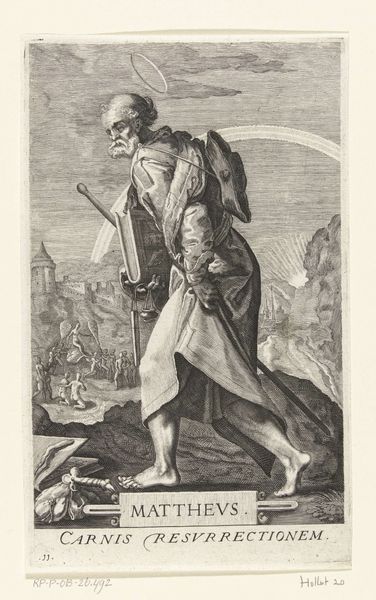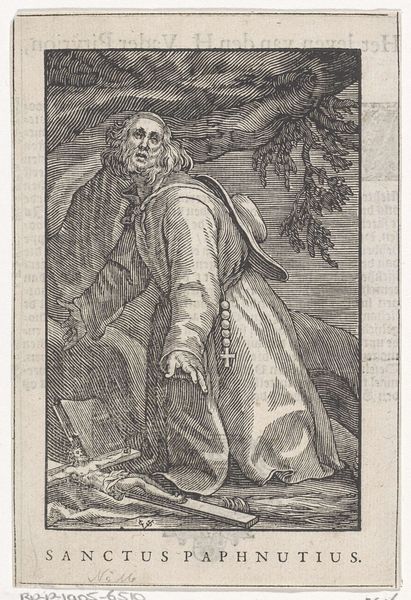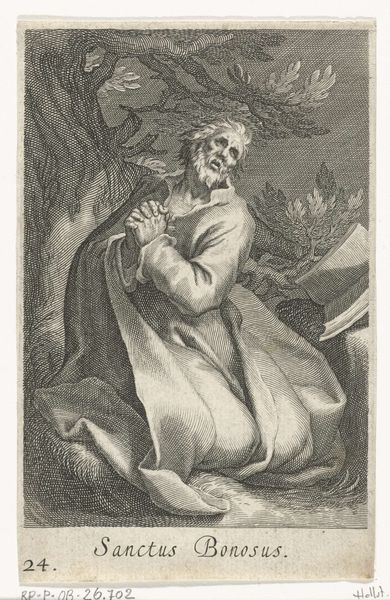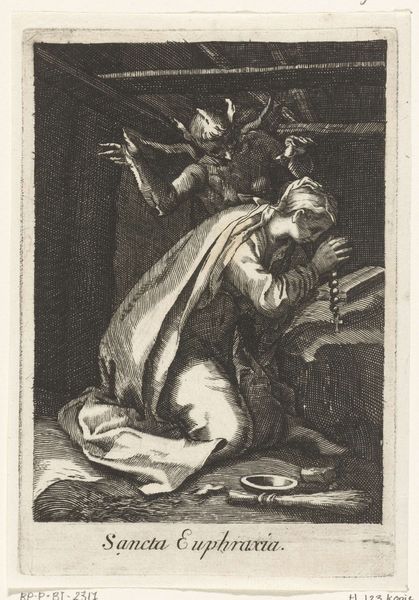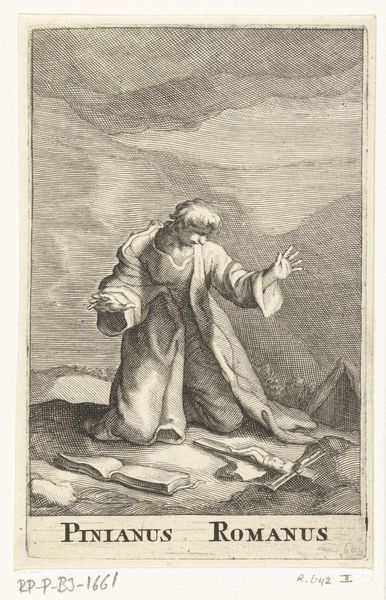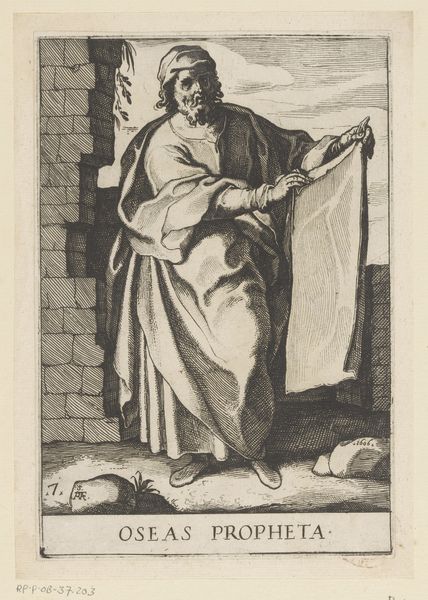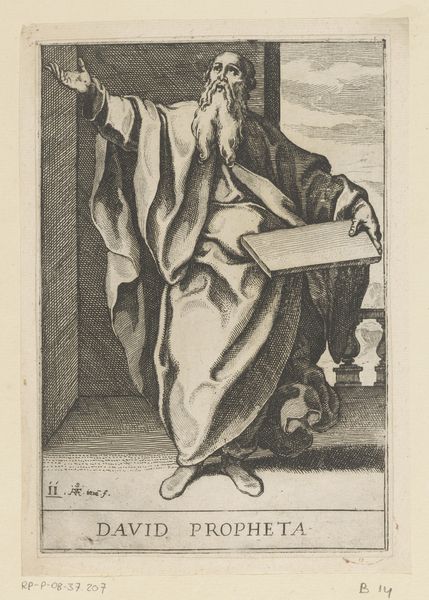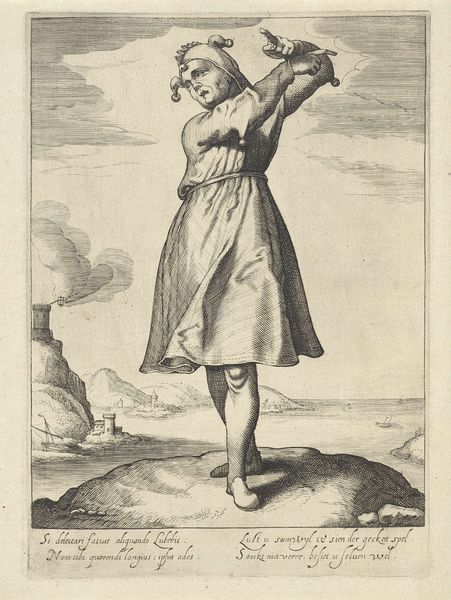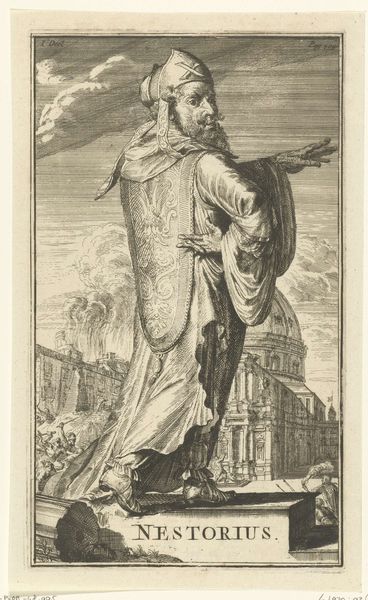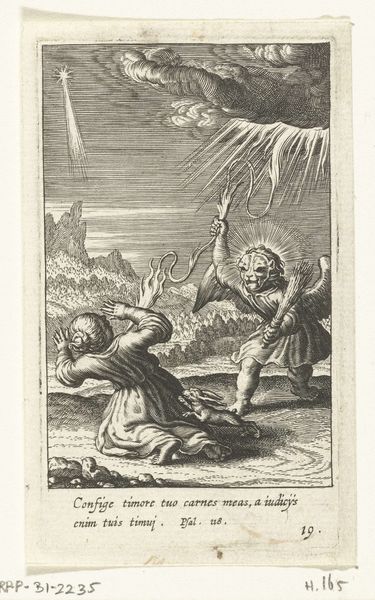
Dimensions: height 145 mm, width 85 mm
Copyright: Rijks Museum: Open Domain
Curator: The atmosphere here is incredibly poignant, wouldn’t you agree? The stark monochrome heightens the feeling. Editor: Absolutely. We’re looking at “Nachtgezicht met een man met een harp bij een graf,” or “Night View with a Man with a Harp at a Grave,” a print created in 1769 by Reinier Vinkeles, currently held at the Rijksmuseum. The man and the tomb have a pronounced monumentality given the overall miniature size of the print. Curator: The stark use of line is interesting. Given the title and subject, you'd anticipate it being somber, and there's that certainly, but the execution feels very meticulous. It’s not just about evoking a mood; it’s also about showcasing the engraver’s craft, the almost clinical precision. Editor: That’s true, the lines are impeccably controlled, forming the image, and were it not for the obvious emotional distress exhibited by the figure, I’d struggle with reading Romanticism into the piece. I mean, look at how Vinkeles details the texture of the tree bark, or the layering of clouds, rendered through these controlled techniques of engraving. This print is very much about making visible the invisible structures of feeling through the skillful manipulations of labor. Curator: Well, there is a prevailing drama in the scene - the man seemingly reciting or performing beneath a full moon, and leaning on a skull-adorned tomb – that places the image firmly in dialogue with period notions of sensibility. Editor: That symbolism, while powerful, also relies on visual cues that were very much linked to aristocratic taste at the time, making it more complicit with systems of class, perhaps, than genuinely challenging of social convention. The man’s act of mourning or reflection risks becoming mere spectacle for an elite consumer base. But also, if we consider Romanticism’s engagement with nature, especially during the industrial revolution, might we interpret the print’s focus on both the landscape, and the texture of its rendering, as an elegy for an age dominated by craft before mechanized labor? Curator: Perhaps. Editor: Ultimately, this print gives us a fascinating insight into the connections of emotional expression, engraving techniques, and emerging capitalist structures. Curator: Yes, a nice illustration of feeling expressed through skillful and exacting handcraft.
Comments
No comments
Be the first to comment and join the conversation on the ultimate creative platform.
